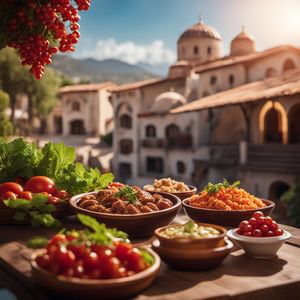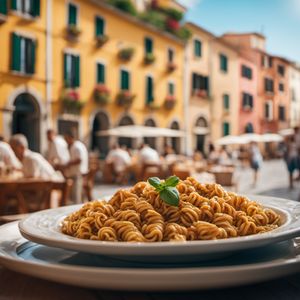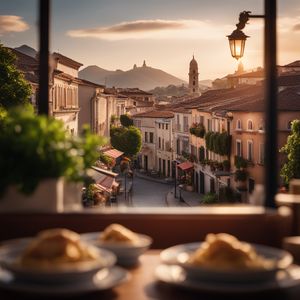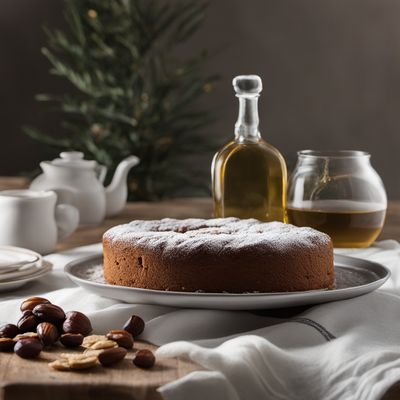
Dish
Castagnaccio
Castagnaccio is made with chestnut flour, water, olive oil, rosemary, and pine nuts. The ingredients are mixed together to form a batter, which is then poured into a baking dish and baked until firm. The result is a dense, nutty cake with a slightly sweet flavor. Castagnaccio is often served with a drizzle of olive oil and a sprinkle of sea salt.
Origins and history
Castagnaccio is believed to have originated in Tuscany, Italy, where chestnut flour was a common ingredient. It was often made by peasants and was a way to use up leftover chestnut flour. Today, Castagnaccio is enjoyed throughout Italy and is a popular dessert in many Italian restaurants.
Dietary considerations
Castagnaccio is gluten-free and vegan, making it a great option for those with dietary restrictions. However, it does contain nuts and may not be suitable for those with nut allergies.
Variations
Castagnaccio can be made with different toppings, such as raisins or figs, to give it a sweeter flavor. It can also be made with different herbs, such as thyme or sage, to give it a more savory flavor.
Presentation and garnishing
Castagnaccio can be presented on a rustic wooden board with a drizzle of olive oil and a sprinkle of sea salt. It can also be garnished with a sprig of fresh rosemary or a few pine nuts.
Tips & Tricks
To keep Castagnaccio moist, store it in an airtight container at room temperature. It can also be frozen for up to three months.
Side-dishes
Castagnaccio is often served as a dessert, but it can also be enjoyed as a snack or breakfast. It pairs well with a glass of red wine, such as Chianti or Sangiovese, or a cup of espresso.
Drink pairings
Castagnaccio is often served with a glass of red wine, such as Chianti or Sangiovese. It is also delicious with a cup of espresso.
Delicious Castagnaccio recipes
More dishes from this category... Browse all »

Ageeli
Yemeni cuisine

Agnello pasquale
Italian cuisine

Agnes Bernauer Torte
German cuisine

Amygdalopita
Greek cuisine

Angel Food Cake
American cuisine

Apfelkuchen
German cuisine

Arnadí
Spanish cuisine

Baked Alaska
American cuisine
More cuisines from this region... Browse all »

Abruzzese and Molisan cuisine
Savory, Earthy, Rustic, Hearty

Apulian cuisine
Fresh, Savory, Rustic, Simple

Arbëreshë cuisine
Savory, Tangy, Herbaceous, Spicy

Basilicatan (Lucanian) cuisine
Savory, Earthy, Rustic, Hearty

Ligurian cuisine
Light, Delicate, Herbaceous, Salty

Lombard cuisine
Rich, Savory, Meaty, Cheesy

Neapolitan cuisine
Bold, Savory, Spicy, Tangy, Fresh

Roman cuisine
Fresh, Light, Herbaceous, Tangy, Savory

